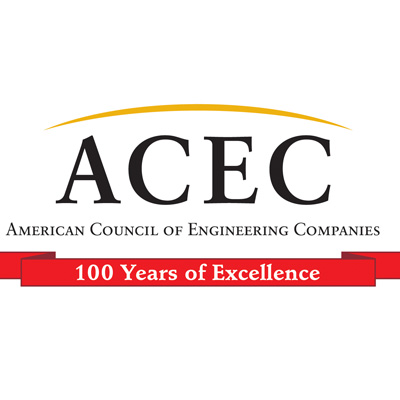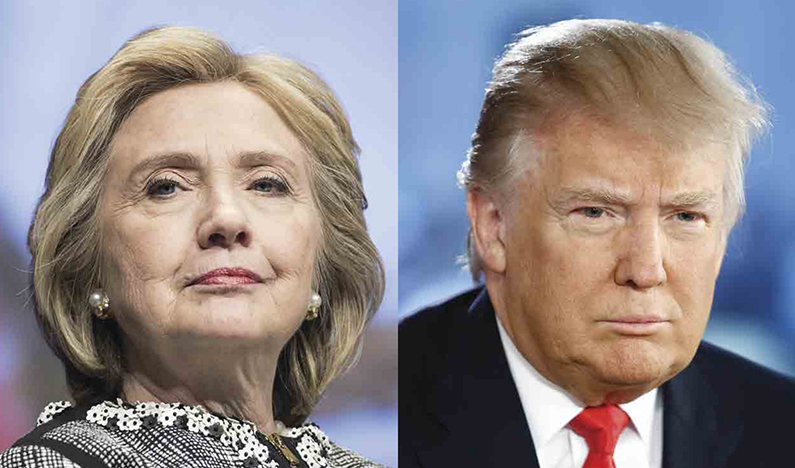AMERICAN COUNCIL OF ENGINEERING COMPANIES (ACEC)
By Alan Joch
At a time of prolonged economic uncertainty, the stakes in this year’s election couldn’t be higher. Here’s a guide to help engineers weigh the industry impact of each candidate’s economic proposals
As we near the 2016 presidential election, many executives remain concerned about the future strength of the U.S. economy and question which candidate will be best for business.
In its monthly surveys of small companies, the National Federation of Independent Business (NFIB) reports business optimism is stuck at levels seen during the 1990 recession. “Our members tell us that uncertainty about taxes, regulations and health care is making them very pessimistic,” says Juanita Duggan, NFIB president.
Given the high stakes of this year’s election, business leaders face a tough choice as they decide which nominee has the background, expertise and policies to restore economic optimism. To help answer those questions, here is a summary of key business issues the candidates have been discussing on the campaign trail.
Hillary Clinton: Change Maker
Tax Policy
“An Analysis of Hillary Clinton’s Tax Proposals,” by the Urban Institute & Brookings Institution Tax Policy Center, concludes that federal revenues would rise by $1 trillion in the first decade and add $2.1 trillion in new receipts the following decade.
Contributing to the gains would be interest savings from a more than $1.2 trillion reduction in federal debt over 10 years as a result of Clinton’s proposals, the center reports. Other revenues would come from increased taxes surcharges and exemption limits for the highest-income filers. The top 1 percent would contribute about 75 percent of the additional revenues, while those with incomes below $300,000 would see little change in their taxes, the center forecasts.
Businesses won’t see changes in corporate rates based on Clinton’s proposals; however, certain corporations would pay more to the government as a result of related actions, such as adjustments to laws that multinational corporations use to avoid or lower their U.S. taxes.
Other increased costs for some businesses would come from Clinton’s plan to cut tax subsidies for fossil fuels, including the expense of intangible drilling costs and the deduction for domestic manufacturing for the production of oil, natural gas and coal, the center says. The flipside is tax breaks for businesses that participate in an apprentice program, create employee profit-sharing programs and invest in distressed communities and infrastructure.
Infrastructure
Clinton would increase federal infrastructure funding by $275 billion over a five-year period, fully paying for these investments through business tax reform. Of these funds, she would allocate $250 billion to direct public investment. She would allocate the other $25 billion to a national infrastructure bank, dedicated to advancing our competitive advantage for the 21st century economy. The bank would leverage its $25 billion in funds to support up to an additional $225 billion in direct loans and loan guarantees for energy, water, broadband, transportation and multimodal projects for a total investment of $500 billion.
The bank would also administer part of a renewed and expanded Build America Bonds program, and look for opportunities to partner with the private sector.
Clinton says she would increase accountability, streamline permitting, support multimodal projects that extend beyond a single type of transportation, and encourage better design and technology.
The Democratic challenger plans to upgrade aging rail tunnels and bridges, expand congested highway corridors, eliminate dangerous at-grade railway crossings, and build deeper port channels to accommodate the newest and largest cargo ships. She has promised to begin upgrades to at least 25 of the most costly U.S. freight bottlenecks by the end of her first term.
Clinton says: “Investing in our infrastructure is about so much more than creating good-paying jobs; it’s about maintaining our status as the world’s economic superpower.”
…
Donald Trump: New Direction
Tax Policy
The Trump campaign calls for a “bold, simple and achievable [tax] plan based on conservative economic principles.” This includes “tax relief for all Americans, especially the working poor and middle class, pro-growth tax reform for all sizes of businesses, and fiscally responsible steps to ensure this plan does not add to our enormous debt and deficit.”
The campaign outlines tax-code changes that would remove about half of current filers from income tax rolls and reduce the number of tax brackets from seven to four. Trump’s plan also reduces or eliminates loopholes for the very rich and special interests. The campaign has offered few details.
Implementation of Trump proposals administration would reduce federal revenue by $9.5 trillion in the first 10 years, with an additional $15 trillion decline in the next decade, according to “Analysis of Donald Trump’s Tax Plan,” by the Tax Policy Center.
The majority of revenue declines would stem from tax cuts for individuals. The cuts would affect all income levels, but high-income taxpayers would see the largest reductions. For example, the highestincome 0.1 percent of taxpayers would see an average reduction of more than $1.3 million in 2017, nearly 19 percent of after-tax income, according to the Tax Policy Center report. Middle-income households would receive an average tax cut of $2,700—or 4.9 percent of after-tax income.
Lower corporate income taxes and rate changes for pass-through businesses would account for approximately a third of the total tax cuts, the center estimates. The Trump plan proposes a tax rate of 15 percent for corporations and pass-through businesses.
If enacted, the tax reforms could boost incentives to work, save and invest, the analysis concludes. However, the proposals also raise the specter of increased federal deficits. “Assuming the tax cuts are not offset by spending cuts, the national debt would rise by an estimated 39 percent of GDP in 2026 and by nearly 80 percent of GDP by 2036,” the report says.
“Offsetting a deficit this large would require unprecedented cuts in federal spending,” with Congress facing reductions in projected program spending of 21 percent to prevent the plan from adding to the deficit in 2025, the analysis estimates.
Infrastructure
Trump says the nation’s infrastructure would need at least twice the $500 billion investment proposed by his opponent. “I would say at least double her numbers, and you’re going to really need a lot more than that,” he said.
The Republican nominee is proposing a trillion-dollar infrastructure rebuilding plan backed by a newly developed infrastructure fund. The fund would be supported by government bonds that investors and citizens could purchase, which he says would be particularly attractive now because interest rates the government pays to buyers of U.S. Treasuries are near record lows
“These would be bonds, and sold as bonds, so we’d do infrastructure bonds for the country,” he said.
Similar to some leaders in both parties, Trump has also said he would allow companies to repatriate capital from abroad at a low tax rate and use the money raised to fix bridges and roads.
He also proposes that an independent commission decide which infrastructure projects get funded rather than politicians.
Trump believes his experience as a developer would allow him to more effectively rebuild the country’s infrastructure “on time and under budget” than others.
Download full article (PDF): Presidential Review: Which Candidate is Best for Business?
 About the American Council of Engineering Companies
About the American Council of Engineering Companies
www.acec.org
The American Council of Engineering Companies (ACEC) is the voice of America’s engineering industry. Council members – numbering more than 5,000 firms representing more than 500,000 employees throughout the country – are engaged in a wide range of engineering works that propel the nation’s economy, and enhance and safeguard America’s quality of life. These works allow Americans to drink clean water, enjoy a healthy life, take advantage of new technologies, and travel safely and efficiently. The Council’s mission is to contribute to America’s prosperity and welfare by advancing the business interests of member firms.
Tags: ACEC, Alan Joch, American Council of Engineering Companies, Donal Trump, Election 2016, Engineering Inc., Hillary Clinton, Presidential Debate







 RSS Feed
RSS Feed